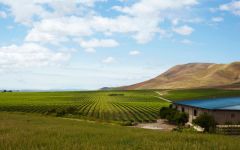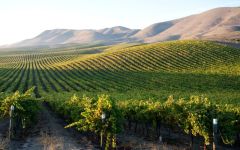Cambria Katherine's Vineyard Chardonnay 1999
-
Wine &
Spirits -
Robert
Parker

Product Details
Your Rating
Somm Note
Winemaker Notes
Professional Ratings
- Wine & Spirits
- Robert Parker's Wine Advocate
Other Vintages
2022-
James
Suckling -
Wine
Enthusiast -
Wine
Spectator
- Vinous
-
Wine
Enthusiast -
Wine &
Spirits -
Jeb
Dunnuck -
Wine
Spectator
-
Wine
Spectator -
Wine
Enthusiast -
Jeb
Dunnuck
-
Wine
Enthusiast -
Wine
Spectator -
Wilfred
Wong
-
Wine
Spectator -
Wine
Enthusiast
-
Wine
Spectator -
Jeb
Dunnuck
-
Jeb
Dunnuck
-
Wine
Enthusiast
-
Wine
Enthusiast -
Tasting
Panel -
Robert
Parker
-
Wine &
Spirits
-
Wine
Enthusiast
-
Wine
Enthusiast
-
Wine &
Spirits
-
Wine
Enthusiast
-
Robert
Parker
-
Wine &
Spirits
-
Wine &
Spirits
-
Robert
Parker -
Wine &
Spirits
-
Robert
Parker
-
Wine
Spectator







Cambria Estate Winery sits on storied land. Originally planted in 1971, and brought into the Jackson family by Jess Jackson and his wife Barbara Banke in 1986, Cambria’s land has been a premier producer of cool climate wines for more than 45 years. Situated on one of the only transverse valleys on the West Coast, Cambria’s vineyards are planted on the Santa Maria Bench where cool, sea air funnels in unobstructed from the nearby Pacific Ocean, blanketing the vines in maritime fog. With one of the longest growing seasons in California, the unique climate at the Estate produces “refrigerated sunshine” that develops concentrated flavors in the grapes making Cambria ideally situated for cultivating Chardonnay and Pinot Noir varietals.
Every Cambria wine produced is a single vineyard offering and certified sustainable. The two primary vineyards on the Estate are Julia’s and Katherine’s. Named for Jess and Barbara’s daughters, these vineyards are marked by depth of character, and a history of acclaim – most recently when Wine & Spirits named Cambria Winery one of the Top 100 Wineries of 2020. Each vineyard holds within it ancient soils that include 14 different soil types, while each block contributes different flavor and structural qualities to the wines. Additionally, the 17 clonal varietals on the property are a study in diversity. With a commitment to craftsmanship and artistry, winemaker Jill Russell and the tremendous winemaking and vineyard teams bring to life the legacy of the land through each wine.

One of the most popular and versatile white wine grapes, Chardonnay offers a wide range of flavors and styles depending on where it is grown and how it is made. While it tends to flourish in most environments, Chardonnay from its Burgundian homeland produces some of the most remarkable and longest lived examples. California produces both oaky, buttery styles and leaner, European-inspired wines. Somm Secret—The Burgundian subregion of Chablis, while typically using older oak barrels, produces a bright style similar to the unoaked style. Anyone who doesn't like oaky Chardonnay would likely enjoy Chablis.

The largest and perhaps most varied of California’s wine-growing regions, the Central Coast produces a good majority of the state's wine. This vast California wine district stretches from San Francisco all the way to Santa Barbara along the coast, and reaches inland nearly all the way to the Central Valley.
Encompassing an extremely diverse array of climates, soil types and wine styles, it contains many smaller sub-AVAs, including San Francisco Bay, Monterey, the Santa Cruz Mountains, Paso Robles, Edna Valley, Santa Ynez Valley and Santa Maria Valley.
While the Central Coast California wine region could probably support almost any major grape varietiy, it is famous for a few Central Coast reds and whites. Pinot Noir, Chardonnay, Cabernet Sauvignon and Zinfandel are among the major ones. The Central Coast is home to many of the state's small, artisanal wineries crafting unique, high-quality wines, as well as larger producers also making exceptional wines.
